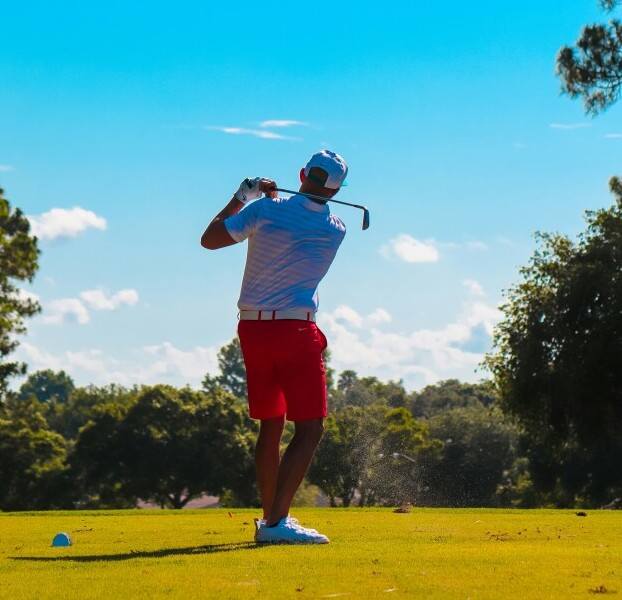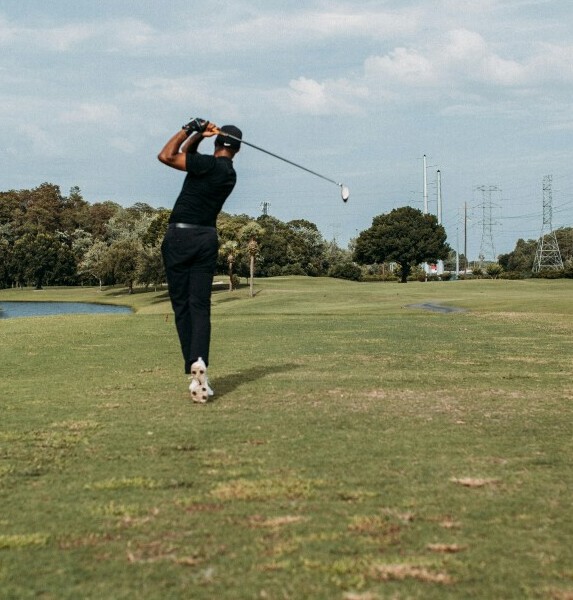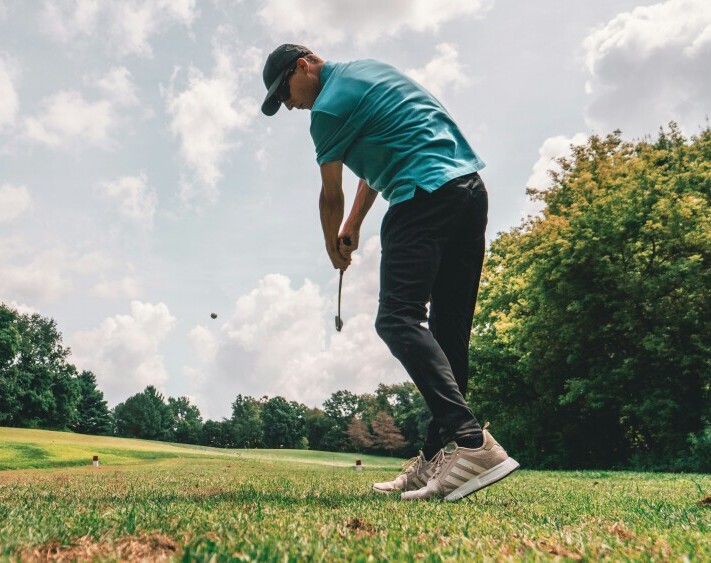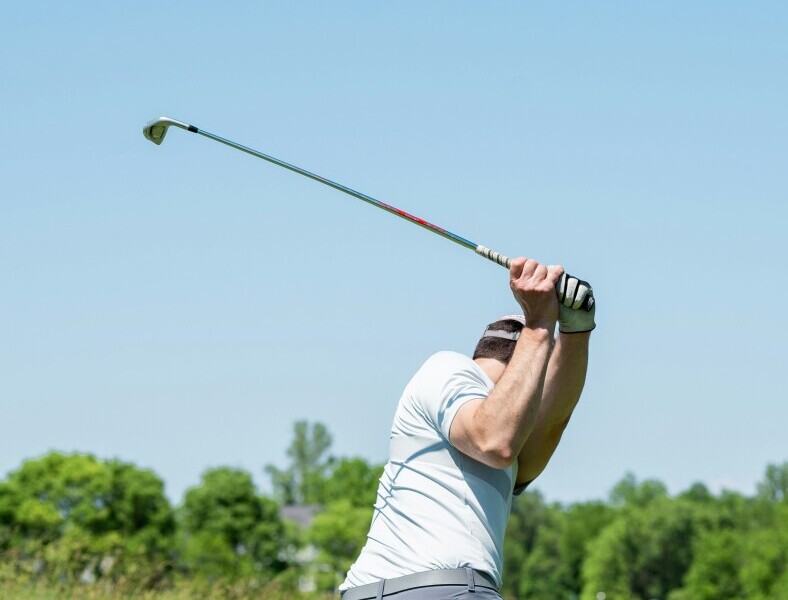Techniques For Fades And Draws In Golf


Fore! Quick note: a few links here are affiliate links. If you snag gear through them, I earn a small commission — no extra strokes added to your game.
The cool thing about golf is that it’s all about control and precision, and fade and draw shots are prime examples of how golfers tweak their game. A fade shot is when the ball starts off straight or slightly left (for right-handed players) and gently curves right. Welcome to the golf vikings’ classroom, now everybody take a seat. Because today we’re talking fades and draws.
Most folks might even say it’s a controlled slice, but it doesn’t veer off like an accidental mishit. Instead, it offers a predictable arc that’s super useful when approaching certain holes or even dodging obstacles. It can become incredibly useful when used properly at the right times.
Now, flip that over, and you’ve got a draw shot. This one starts straight or slightly right and curves back to the left. Again, for right-handers. It’s kinda like the opposite of the fade and often considered a sign of skill since it can give you extra oomph, a bit more roll once it hits the ground, thanks to its topspin. Got it?
These shots aren’t just modern golfing tricks. They go way back in time, evolving with the game itself. Back in the day, golfers had to deal with massive courses not designed to suit every single club they carried.
That’s where the fade and draw came into play, letting players adjust their shots according to the challenge at hand. Think of it as the original “course management strategy” that allowed flexibility on the field. It allowed golfers to maneuver their way around any bends in the course.
Understanding the difference between fades and draws is pretty essential for any golfer looking to up their game. You get to choose what shot best suits your situation, allowing more room for strategic plays, and who doesn’t want a little edge over the competition? So what do these shots offer you as a golfer?
Mastering ball flight comes down to precision and control. Learning the fundamentals of the golf swing can give you the technical base you need to consistently shape your shots into a fade or draw.

Why Choose a Fade or a Draw: Strategic Advantages and Golfing Goals
Golf is not just about hitting the ball as hard as you can. It’s also about finessing your way around the course with style and strategy. Choosing between a fade or a draw can be a real game changer. Making the right choice can put you in prime position for a great approach shot.
Imagine standing at the tee, wind trying to mess up your perfect day out there. That’s when knowing how to fade or draw your shot isn’t just useful—it’s crucial. Using a fade or draw in the right situations can give you a huge advantage on the golf course.
Fades generally give you more control over your shots and are typically easier to stop on the greens. When you’re facing pin placements that seem a bit cheeky or attempting to bypass a bunker in the front right, a trusty fade can make all the difference. It’s the shot for those perfect approaches you dream about.
On the other hand, draws can add some yards to your drive, thanks to that nice, sweet topspin they carry. It’s pretty much your best bet when needing to navigate a dogleg left or when the fairway narrows, and position is everything. With the proper shot you can navigate twisting or narrow fairways.
Picking the right shot not only showcases talent but also wits, and that feels amazing when it pays off! When you can successfully pull off a great fade or draw shot, it gives you the confidence that you’ll be able to work with any course you might play on.
Navigating windy conditions is where these shots earn their keep. With a fade, the ball defies the breeze in a way, reducing its impact. A well-executed draw handles crosswinds like a pro, bending itself smoothly to the greens. Executing a fade shot can help you get around a strong wind.
But let’s talk about personalization. Playing to your own strengths and understanding which shot fits not only the course but your skillset too can set you up for a more fun experience. Knowing when to execute a fade or a draw can turn a frustrating round into a memorable one.
To make a draw or fade work for you, it’s crucial to have a reliable short game. Check out our guide on short game mastery to sharpen your scoring shots after shaping the ball from the fairway.

Benefits of Fades and Draws for Every Golfer
Getting the hang of fades and draws means you’re not just swinging but controlling your own game like a boss. These kinds of shots elevate your precision and creativity on the course. If you are staring down a dogleg or sharp turn on the fairway, you can pull the fade or draw out of your arsenal.
Imagine being stuck behind that awkward line of trees or needing to maneuver around a wicked dogleg. With fades, you swoop around obstacles like a pro, and a well-placed draw bends that ball just right, setting up a strong position for the next play. They can help make a difficult course layout manageable if you can hit the ball right.
But that’s not all. These shots add flexibility to your game. Suddenly, you’re not just playing against the course but working with it too, using its unique layout to your advantage. Fades stop quicker, giving you a chance to be aggressive even when the pins hide around tricky placements.
Draws? They reward you with a timely roll, perfect for maximizing distance while still keeping you in check towards your target. It means better strategy and more options when it comes to shaping your shots. Your golf playbook opens up when knowing how to fade or draw.
When even the pros are banking on fades and draws for more control under pressure, adding these techniques to your game isn’t just about boosting performance—it’s about having fun exploring different shot possibilities. It’s this kind of adaptability that transforms a decent game into a standout experience. So how can we perform the perfect fade or draw?
If your fades and draws are turning into unwanted slices or hooks, you might need to revisit your mechanics. Learn how to fix a slice in golf and regain control over your shot shape.

Mastering Techniques for Perfect Fades and Draws
Getting fades and draws just right takes some skill, but with the right techniques, you can add these shots to your ever growing bag of golf tricks. Let’s talk setup and execution. Just like any shot in golf, the proper setup is going to set you up for a prime shot.
Stance plays a big part in nailing these shots. For a fade, open up your stance slightly, aligning your feet a bit left of the target. This encourages the swing path you want. The grip should stay light to allow for that gentle left-to-right spin. Getting the spin to work in your favor can be useful to your golf game.
Meanwhile, for a draw, close off your stance a little more towards the right, and think about the path moving from in to out relative to your target. This will allow your draw to get that excellent topspin to get your ball to curve left.
Body alignment is key. Keep those shoulders and hips aligned with your stance. For the fade, this configuration will help the clubface remain slightly open at impact, encouraging the ball to start left and curve right. This is vital executing the shot properly, as having your clubface open is going to get the correct spin to get the ball where you want it to go.
For a draw, that closed stance coupled with the body alignment helps deliver the clubface to promote a slight right-to-left curve. So not only having your stance in the right direction, but getting your clubface to spin your ball left will be key to the ideal draw shot that you’re aiming for.
Pre-swing visualization can really make a difference. Picture the shot you’re about to hit, the trajectory, where you want it to land. Visual cues help in creating muscle memory, so your body instinctively follows the desired path when you actually swing. It gets you in the right mindset for hitting the ball in the right spot.
Several practice drills revolve around exaggerating the feel of the path. To practice fades, try setting up obstacles that force you to swing out to in. For draws, find drills that make you swing in from the inside. Rehearse with alignment sticks at the range to make sure your aim is spot-on. Get used to the motion of your swing and positioning your clubface to get the best contact.
Learning these techniques opens up awesome possibilities for creative play on the course. Keep practicing until it feels second nature, and those beautiful, controlled curves will become a reliable part of your golf routine. Let’s wrap up with some final tips to get the perfect fade or draw shot.
Shaping shots becomes easier when you understand club selection. Read our article on club selection strategies for better course management to make smarter shot-shaping decisions.

Pro Tips for Optimizing Fade and Draw Shots
Ready to up your fade and draw game? Here are some tips to make those shots count every time. A common slip-up golfers make is focusing on power over precision. Remember, it’s all about the swing path and angle of the face at impact. Make sure you’re not gripping the club too tight; let the swing feel natural and smooth.
Equipment and tech play a huge role these days. Use clubs that suit your style and naturally facilitate a fade or draw. Some drivers are designed with built-in offset features to help encourage these shots.
Also, software like swing analysis apps can give you insights into your angles and help refine your technique. Try out different clubs with various apps to see what gives you the best chance at getting the proper ball spin.
Pros know when to use fades and draws to their advantage. Looking to emulate the best? Observe their shot selection and course management. They don’t just hit fades and draws because they look cool. It’s all about strategic placement and preparing for the next shot to get you in an ideal spot for getting into the green.
The mental game is just as crucial. Stay calm and deliberate when planning these plays, especially under pressure. Confidence in your ability to execute fades and draws will often make the difference, whether you’re battling wind or playing for position on challenging holes. Knowing you can hit these shots will boost your esteem on the course.
Practice consistently, focusing on both technical adjustments and mental preparation. Keep experimenting with minor tweaks to discover what feels right for your game. In no time, those fades and draws will become a natural and integral part of your golfing repertoire. I’ll see you out on the golf course, hitting those fades and draws with ease.


